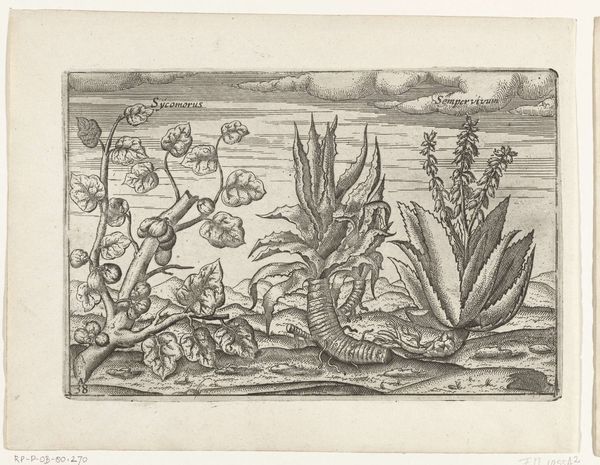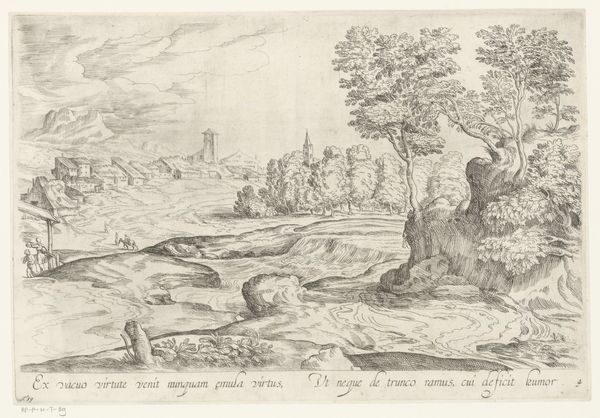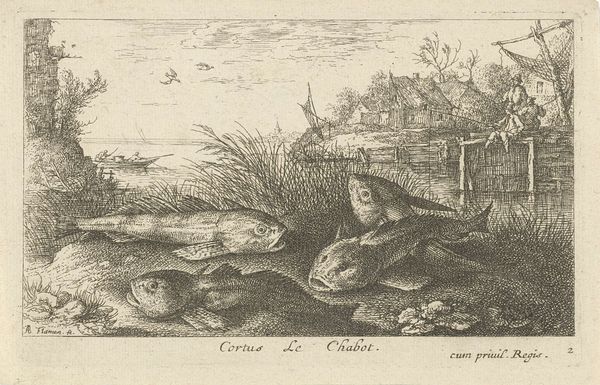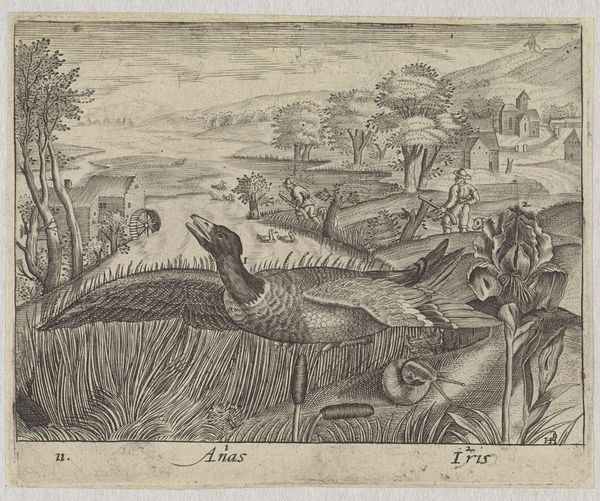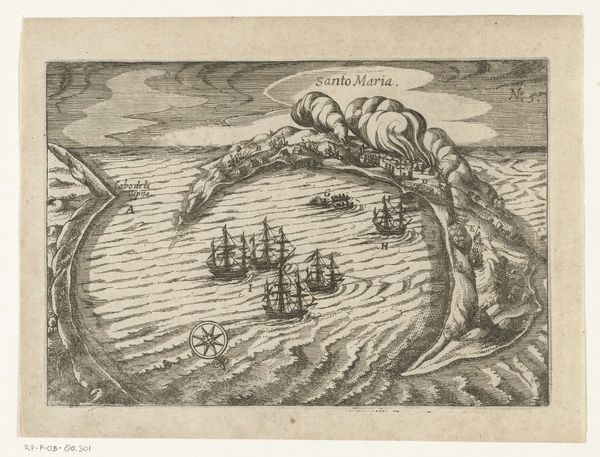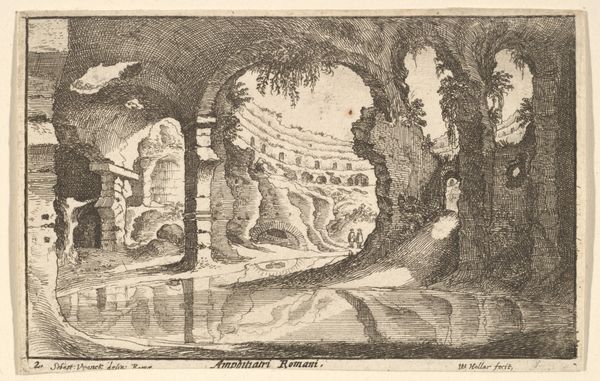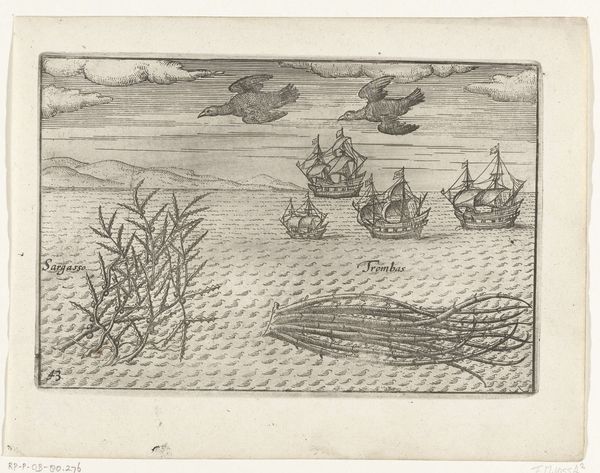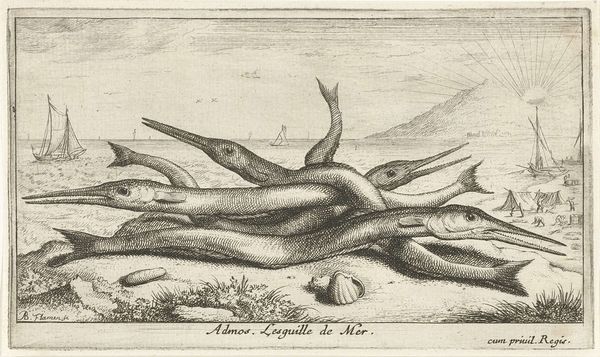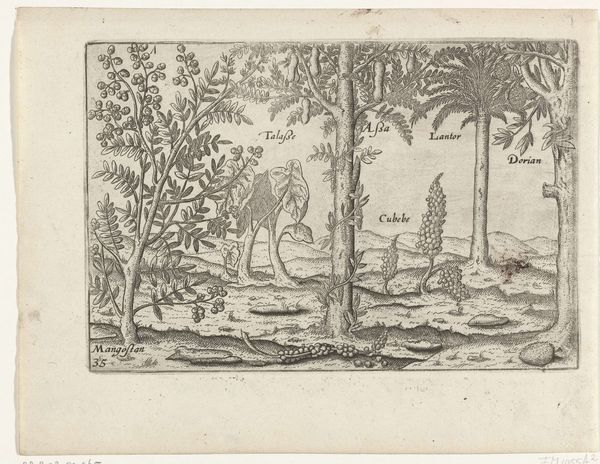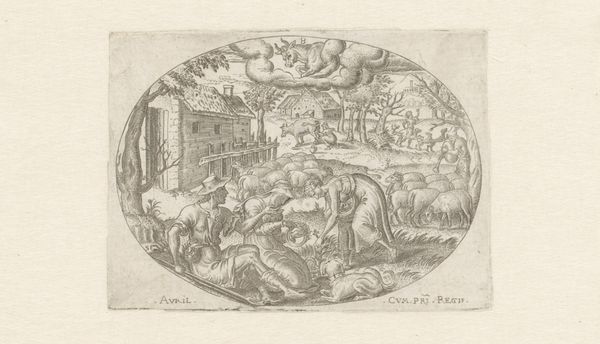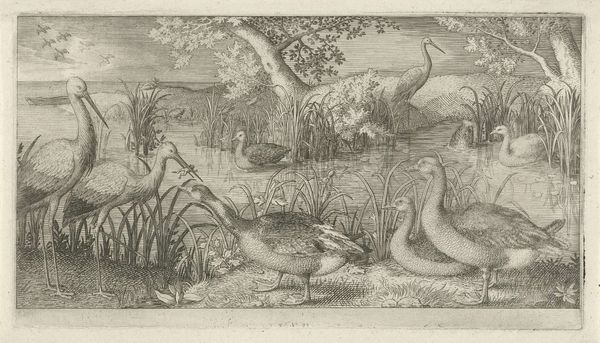
print, etching, engraving
#
pen drawing
#
dutch-golden-age
# print
#
pen illustration
#
etching
#
old engraving style
#
landscape
#
pen work
#
sketchbook drawing
#
engraving
#
realism
Dimensions: height 101 mm, width 172 mm
Copyright: Rijks Museum: Open Domain
Curator: This intricate etching from 1664 is by Albert Flamen, titled "Mudcrawlers on a Riverbank". Editor: It's striking, isn't it? The close-up view of those mudcrawlers – they almost seem to spill out of the frame. The landscape behind feels very distant in comparison, doesn't it? Curator: It's fascinating how Flamen brings this previously ignored micro-world into the artistic sphere. It speaks to the Dutch Golden Age's expanding awareness of the natural world. One should also think about where these images circulate; perhaps a natural history text, or even bound and sold independently. Editor: True, there's a clear focus on naturalism, even realism. Note how he employs varied line weights to convey the textures of the mud and the sinuous bodies of the fish. The composition seems to want a sense of accurate detail, prioritizing observation over a grander narrative. Curator: Right, and while seemingly simple, this work participates in broader discourses about scientific observation and categorization that were taking shape across Europe. Images such as these reflect the beginnings of systematic approaches to natural history. Editor: There is something a bit unsettling to the work for me, though. It is the juxtaposition of that peaceful, idealized background with these creatures right in our face, rendered with that stark clarity. Curator: Indeed, and to today's viewer, these prints offer insights into period attitudes about science, nature, and aesthetics. They also raise questions about representation and who gets to be the subject of art. Editor: Absolutely. Looking closely at Flamen’s line work, one can understand not just what is shown, but the very act of seeing in the 17th Century. It offers such a precise, engaging aesthetic experience. Curator: Well put. This small image opens a rather expansive view onto artistic and scientific concerns of its era. Editor: I concur entirely; its deceptively simple subject matter provides endless paths to observe how both Flamen’s art and society were coming into new focus.
Comments
No comments
Be the first to comment and join the conversation on the ultimate creative platform.

